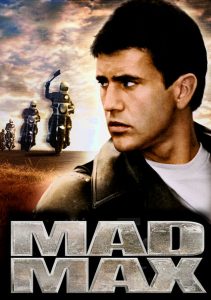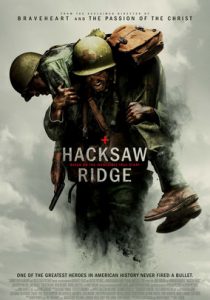Mad Max-1979
Director George Miller
Starring Mel Gibson
Top 250 Films #237
Scott’s Review #1,070
Reviewed October 15, 2020
Grade: A-
Mad Max (1979) is a gritty and dirty film that is nothing like any other film coming before it. There are an edginess and an “off the beaten track” quality that sucks you in and pummels you into submission with its energy and ferocity.
The film is raw and not slick and hats off for that. This is all done with fun intentions and it’s meant to be enjoyed, but the film has brutality and power that must be experienced to be believed.
The plot is not the most important quality, nor is it the most believable, but it’s the trimmings that make Mad Max unforgettable.
I haven’t seen the two follow-up sequels, Mad Max 2 (1981) or Beyond Thunderdome (1985), but my understanding is they are more family-friendly films, disappointing to hear after viewing the raw power of the original.
The undesirable Fury Road (2015), is an enormous critical and commercial success, but the appeal lost on me, is to be skipped in favor of the first.
I disliked that film.
But alas, a treasure such as the original can never be duplicated. The revenge-themed, fast car-driving, lewd masterpiece, is a must-see cult classic.
It stands the test of time.
In a post-apocalyptic future, an angry cop Max Rockatansky (Mel Gibson) is looking forward to retiring, having had enough of the derelicts that populate his region. One day, his world is shattered when a malicious gang murders his family as an act of retaliation, forcing a devastated Max to hit the open road seeking vengeance.
As he travels the Australian outback’s empty stretches of highway, he tours the bloodstained battlegrounds ruled by low-life bikers who feed on violence.
Mad Max made Mel Gibson a star. His breakthrough role, led to future work in the action and buddy genres, specifically the Lethal Weapon franchise (1987-1998) with tepid success from any artistic standpoint until he bravely took on more creative and challenging roles.
Max is his finest action character and most authentic feeling. He mixes a blend of rage, sentimentality, and humanity, perfectly, never missing a beat.
And his youthful looks are enchanting to see.
The multitude of scenes featuring super fast-cars, motorbike gangs, and leather-clad creatures with colorful tattoos and missing teeth are just the icing on the cake of the fun that lies ahead.
Names like Toecutter and Bubba give you an idea here.
These are all great add-ons, but the revenge-seeking Max is the one to watch. The scene is immediately set when the grizzled Nightrider is killed by Max in a chaotic police chase. His gang goes rampant and loots and destroys shops and businesses, raping both women and men. All hell breaks loose.
The best sequence is also the most horrific.
Taking place on the open road, naturally, a sweet vacation by Max, wife Jessie (Joanne Samuel), and son Sprog begins with a pleasant drive, only to result in a chase scene climaxing with Sprog’s death and Jessie languishing in intensive care.
The image of Sprog and Jessie lying on the open road, tattered and torn, is memorable and sticks with you.
The film is intelligent if studied thoroughly enough, and a study in film school is recommended. Credit must be given to director George Miller who knows his way around a camera.
The cinematography lends much to the film and a feeling of being there is the desirous result. The editors deserve a special prize for their brilliant efforts.
Undoubtedly influencing countless action genre selections of the 1980s and 1990s, most running the gamut between only marginally fun (the Terminator franchise-1984-present) or downright atrocious (The Running Man-1987), Mad Max (1979) breathes life into the genre.
Action films are categorically known to be one-dimensional but by adding a cool Australian locale, characters who are filled with cartoon bombast and punky zest, and a futuristic mystique, Miller crafts well.
It’s a low-budget flick, destined for underground viewership and appreciation, that is somehow nearly flawless.


